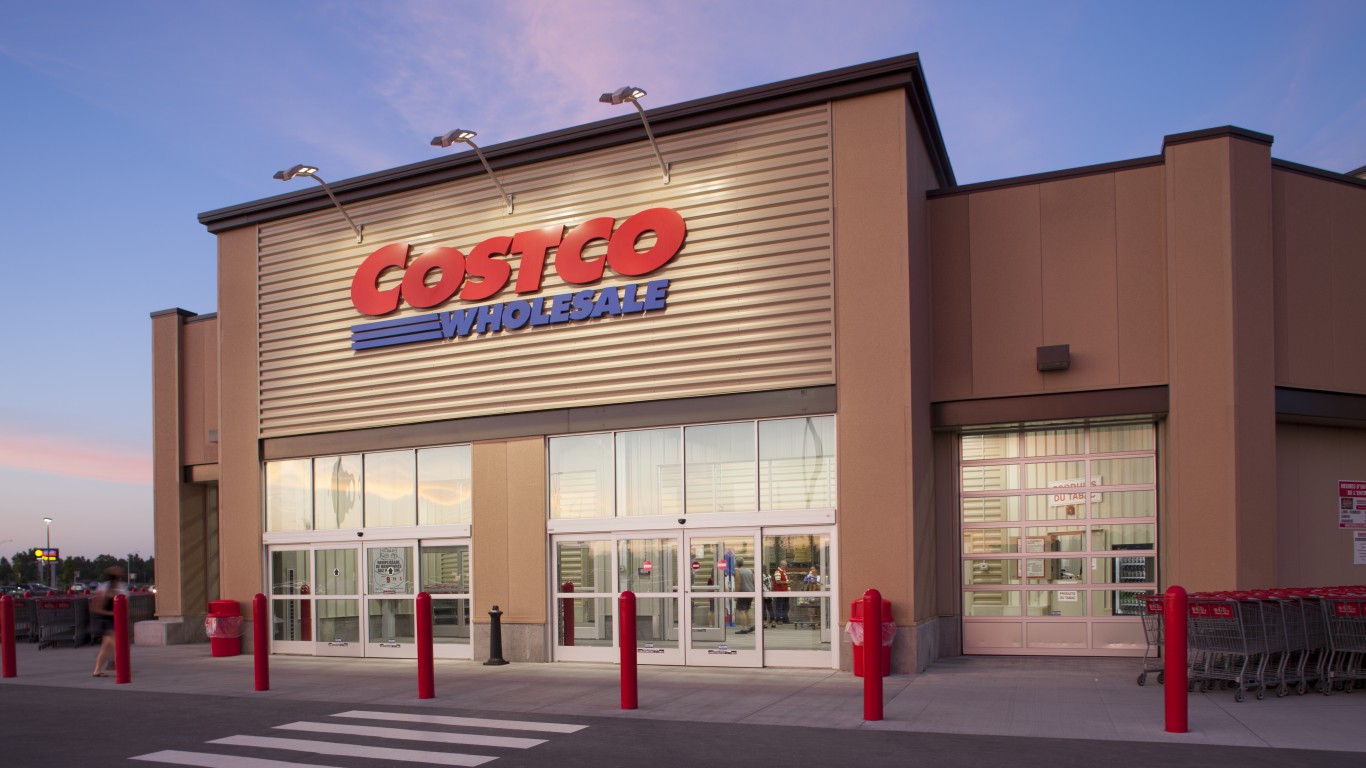
Elon Musk, the CEO of Tesla Inc. (NASDAQ: TSLA) and SpaceX, told Amazon.com Inc. (NASDAQ: AMZN) CEO Jeff Bezos that the huge e-commerce company should be broken up.
It is not the first time the action has been suggested. Each time the subject comes up, Amazon stockholders have to wonder whether their company could change radically.
[in-text-ad]
Musk was upset that Amazon’s Kindle publishing operation refused to publish a book about the COVID-19 pandemic. Musk took to Twitter to say that the decision was “insane” and showed Amazon’s extraordinary muscle. Musk clearly believes that Amazon has too much control over what people can and cannot read. Because Amazon is the world’s largest online bookstore, that is true to some extent.
More serious suggestions about dividing Amazon have come from members of Congress. Others have come from the current administration. Former presidential candidate Senator Elizabeth Warren believes that tech firms like Amazon, Google, Apple Inc. (NASDAQ: AAPL) and Facebook Inc. (NASDAQ: FB) stifle competition because of their sizes.
The U.S. Department of Justice launched an investigation last year into whether Amazon and Google are monopolies.
A Breakup May Not Be Bad for Investors
Amazon is composed of three large segments, which means that dividing it would not be difficult. The first segment is e-commerce. The second is its own consumer electronics, and the third is Amazon Web Services (AWS).
Founder Jeff Bezos grew AWS out of the computer operations the company needed for e-commerce.
Investors might want to see the AWS cloud business spun out, with or without the government’s help. This huge business likely is worth more than the e-commerce or streaming media services. It has faster growing revenue than e-commerce, much better margins and long-term growth potential.
How Big Is Amazon Web Services?
AWS revenue in the most recently reported quarter was $10.2 billion, up from $7.7 billion in the same period of 2019. Operating income for the division was $3.1 billion. That is up year over year from $2.2 billion.
While AWS is not Amazon’s largest unit, it is the fastest growing. Furthermore, the AWS operating margin of 30% is massive compared to the other divisions of Amazon.
The size of the global cloud computing market is over $260 billion, and it is expected to grow by 10% to 29% over the next five years. AWS is the top company in cloud market share, which is why the division is so valuable. The number two company, based on most analyses, is Microsoft Corp. (NASDAQ: MSFT).
Because of the size of the market, Amazon is unlikely to hit a wall in revenue growth, even with its number one spot.
One thing some investors like most about AWS is that it markets to business and not consumers. Amazon consumer-based e-commerce is more vulnerable to drops in consumer spending.
Amazon’s More Well-Known Businesses
Amazon dominates the online retail industry in the United States. It has contributed to the decline of brick-and-mortar retail, which has triggered the loss of tens of thousands of American jobs, industry analysts and economists say.
Retail sales have continued to move online. This is even a large part of Walmart Inc.’s (NYSE: WMT) business now.
Amazon has cemented its lead during the pandemic. Many brick-and-mortar retailers could not open because of the spread of COVID-19. That has driven consumers online.
Traditional retailers have begun to suffer such huge sales drops that several have gone bankrupt. The best known of these is J.C. Penney.
Bezos acknowledged the headwinds of the pandemic when earnings were released: “From online shopping to AWS to Prime Video and Fire TV, the current crisis is demonstrating the adaptability and durability of Amazon’s business as never before, but it’s also the hardest time we’ve ever faced.”
Despite these headwinds, Amazon’s business was strong enough to hire 175,000 people in March and April. At the same time, the pandemic has threatened Amazon’s delivery network.
E-commerce continues to be Amazon’s largest operation. Amazon posted North American e-commerce sales of $46 billion last quarter. International e-commerce revenue was $19.1 billion.
The e-commerce operations are barely profitable. Amazon’s operating profit in North America e-commerce was $1.3 billion last quarter. It lost $398 million outside the United States.
Much of the domestic and international e-commerce revenues are driven by Amazon Prime. Prime is a set of paid subscription services that has well over 150 million members worldwide. Prime’s most significant subscriber benefits are a free video-streaming service and free shipping. That streaming media service is part of a crowded marketplace.
Amazon also has a strong consumer electronics business based on artificial intelligence products that consumers use in their homes. Its Alexa voice-activated software can control home entertainment and communications. Amazon has an estimated 75% of the global smart speaker market. Most of the Alexa home products are sold under the Dot brand.
It is almost certain these same products will enter the business sector. That will create a new business-to-business operation for Amazon’s artificial intelligence.
Does Amazon Have a Fourth Business?
It could be argued that Amazon has a fourth business, even though it does not break out any financial data for the operation. The company has started to sell online advertising. This puts it into competition with Google and Facebook.
Amazon’s share of digital market dollars in the United States is projected to rise as high as 10%. Google’s share is expected to be 37%, and Facebook’s to be 22%. Of the three, Amazon is growing the fastest.
Does a Breakup Matter to the Stock Price?
Amazon shares are up 34% year to date and have outperformed the stock market. The S&P 500 is down 1% and the Nasdaq is up 9% for the same period. The Dow Jones industrial average is off 5%.
Amazon’s market cap has risen to $1.23 trillion. Only two other companies have market values above $1 trillion. Apple’s is $1.44 trillion, and Microsoft’s is $1.42 trillion.
Cash Back Credit Cards Have Never Been This Good
Credit card companies are at war, handing out free rewards and benefits to win the best customers. A good cash back card can be worth thousands of dollars a year in free money, not to mention other perks like travel, insurance, and access to fancy lounges. See our top picks for the best credit cards today. You won’t want to miss some of these offers.
Flywheel Publishing has partnered with CardRatings for our coverage of credit card products. Flywheel Publishing and CardRatings may receive a commission from card issuers.
Thank you for reading! Have some feedback for us?
Contact the 24/7 Wall St. editorial team.
 24/7 Wall St.
24/7 Wall St.
